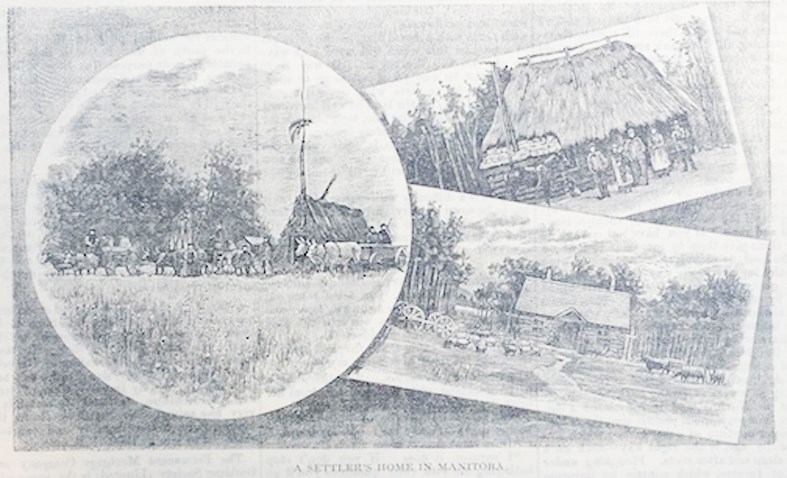Times are tough, right? But that’s ok we come from tough stock. If you want to find out how tough, join us for a trip into the past. For the next few weeks the Empire-Advance will be publishing letters and essays written by settlers and homesteaders from Manitoba, The Manitoba Agricultural Museum in Austin is currently closed to the public due to Covid-19, but we have access to some fascinating insights into our region’s growth and development.
The Manitoba Agricultural Museum (MAM) is a precious storehouse of our history with its collections of implements and vehicles, as well the Homesteader’s Village. The stories and letters we will be reading were found in the archives of the Nor-West Farmer and Manitoba Miller, a publication from the earliest days of our province. The Manitoba Co-operator holds these archives as the successor to the Nor-West Farmer and Manitoba Miller. MAM is inviting submissions to The Farmers of Manitoba – Collecting Stories project, which “aims at gathering stories of the past, present and even the future of farming in our province to contribute to the Farmers of Manitoba exhibit at the Manitoba Agricultural Museum”, See the museum’s website for a copy of the participation form
We introduce this series with a letter from a homesteader who came to the Oak Lake area in 1885, the year that the Empire-Advance began.
A CREDITABLE RECORD Pt, 1
The “Pretty Live Settler” letter (February 1887):
An Englishman writes us; I was pleased to see in a late issue of your paper “A Settler’s Testimony.” I think it about time the sober truth were told about the country; it is good enough to stand on its merits, being neither the El Dorado looked for by some nor the Arctic region imagined by others; but a good enough country for any willing worker, and healthy too, as I have proved by five years residence. In September 1881, I left England, not for her good but my own. I came to this country to make a home on my own land; and as many like myself are on the lookout for information, it may be of service to them if I state my experience.
I have a wife and four children, and having no trade I have worked at anything I could get, at whatever wages were going, taking care to buy for cash in the best market and to spend a little less than I earned. In September ’85, I located a half section near Oak Lake, as a “military homestead”, and in May last I took a small outfit, built a shanty, and started to plow on my own farm. In seven weeks I had 42 acres broken, besides helping a neighbor at a plowing bee, and doing the statute labor, losing one day on account of the heat (over 100o in the shade). In seven weeks more, I had it back set, using an iron swing plow, the drought rendering the breaker useless for that purpose. I may here remark that very few people backset, as they waited for rain: but competent judges pronounced my work well done. I then harrowed it three times. I also plowed about 26 acres for a neighbor, with his four oxen and gangplow, in return for his putting up hay for me as per agreement, thus making a total plowing of about 110 acres between the Queen’s birthday and the first week in October. My neighbor is keeping my oxen and will draw logs for building. I am back in the city working for wages to keep us through the winter.
I intend fencing about 40 aces for pasture and breaking about 50 more, making 90 in all. This will be worked on the three course system, that is, two crops and a fallow, first, wheat; second, barley and the coarser grains; third, fallow, roots and vegetables. What I cannot manure from the buildings I intend to green manure by harrowing in the seeds of some quick growing crop, on a shallow plowing, as early as possible after spring sowing is done, to be plowed under when in flower; thus a seedbed will always ready for the wheat before harvest, giving time for plowing the wheat stubble after harvest for the following crop of barley, etc. In this way, the work can be done without hurry or confusion. And here let me say I claim no credit for anything new; it is simply a modification of the English plan - the best I know of at present , and when I see a better I will adopt it at once.
Messrs. Lawes & Gilbert, of Rothampstead fame, tell us that seven pounds of good grain or its equivalent will produce one pound of flesh. If it be so, it will pay the farmer here to sell his coarser grains to his stock at half a cent per pound, that is, so long as said stock fetch 3 1/2 cents per pound fat. I spend 22 years on the estates of the celebrated Shorthorn breeder, Col. Kingscote. The formula there was “nothing sold unless fat,” and only the best of wheat left the farm - barley being fed to the stock, unless it was extra good; in that case, its money value was returned to the farm in the shape of other feeding stuffs.




